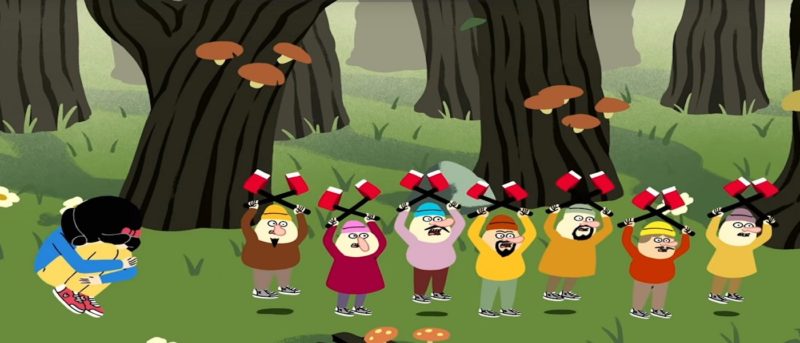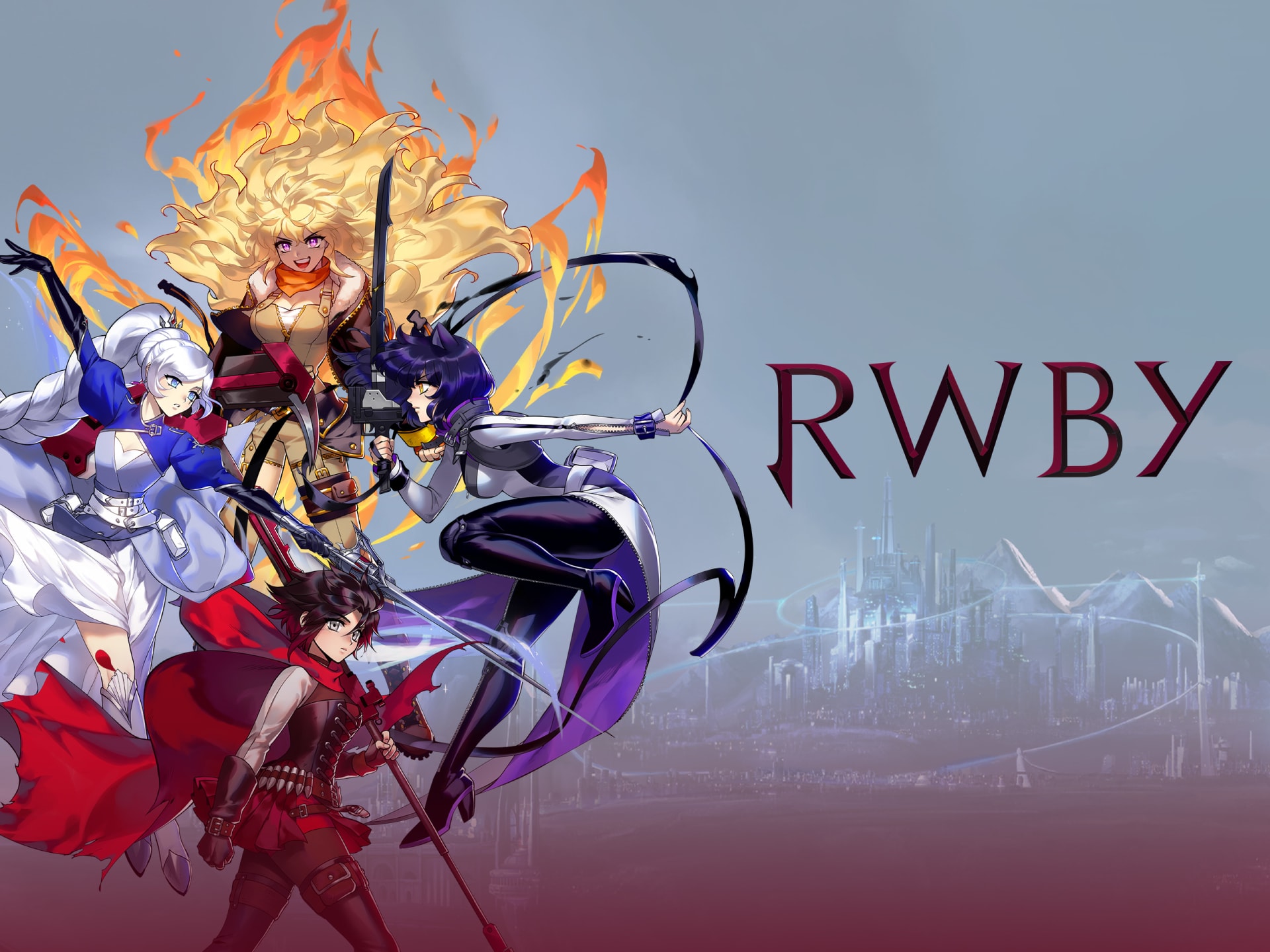Review: JJ Villard’s Fairy Tales “Snow White”
Overview (Spoilers Below):
JJ Villard’s Fairy Tales closes the book on its first season of twisted stories with a very memorable adaptation of “Snow White.” Snow White’s safe life is thrown into jeopardy and she’s forced into isolation after her mother, the Queen, reaches unprecedented levels of vitriol for her daughter. Snow White’s exile brings her together with a bunch of scrappy dwarves. They’re all able to bond through their communal hatred of the Queen and decide to be the change that they want in the world as they plan an attack to eliminate the tyrant. As Snow White and her new friends get closer to show time, a certain hitch in the plan could not only ruin everything, but make the Land of Villardia even more hostile.
Our Take:
JJ Villard’s Fairy Tales has done a fair job with their selections for these six episodes. It makes sense that the season would want to conclude with a more recognizable story and Fairy Tales takes “Snow White” to some challenging places. A big theme in not just JJ Villard’s Fairy Tales, but all fairy tales in general, is the idea of abusive families and delicate souls that come out of dark places. Villard’s adaptation of “Snow White” embraces that theme, but also finds a way to deconstruct it, which is where the season finale realty succeeds.
Much like in the original Snow White, the precocious Snow White ends up on the Evil Queen’s radar and headed towards her doom. In this case, the Queen’s jealousy stems from how Snow White’s congo dessert bars are better than her own. It’s an incredibly trivial thing to go mad over, but it adds a slapstick chaotic slant to the episode. It’s only a matter of time until the Queen’s jealousy gets the better of her and she very quickly turns to murder as her solution.
The Queen staffs the Huntsman to lure Snow White into the woods and then off her in a wood chipper all Fargo style. It’s appreciated to see the Hunstman attempt to put up a bit of the fight against the Queen until she essentially abuses him into following through with her orders. The episode immediately establishes how evil the Queen is and she’s easily one of the most ruthless characters in all of JJ Villard’s Fairy Tales.
When push comes to shove, the Huntsman is unable to execute Snow White and he instead informs her of the Dwarf Resistance, a group of rebels that will keep her safe. JJ Villard’s rendition of “Snow White” takes a major deviation when the Huntsman decides to commit suicide in the wood chipper rather than need to face an agitated Queen without results. “Snow White” isn’t as constantly bloody as other episodes from the season, but the Hunstman’s death is particularly messy and helps fulfill the gore quotient for the installment.
Snow White’s journey aligns her with a militia resistance group of dwarves that help her find a sense of purpose in her new life. The dwarves are entertaining and the episode parodies many of their trademarks, but it doesn’t feel like “Snow White” goes far enough with them. They all feel like freaks, but they’re largely interchangeable in their brief time in the episode. Congo bars continue to be both the bane of Snow White’s existence as well as her saving grace.
Snow White’s congo bars basically give the dwarves the energy that they need to stock up their weapons cache and they assemble a rather hefty arsenal. It’s an understated moment that’s still rather dark, but rather than simply gun down the Queen in a barrage of bullets, they have a much more playful demise in mind for her. The dwarves’ plan cleverly preys upon the Queen’s vanity regarding her own congo bar recipe and this silly element also gets to play a major role in the episode’s conclusion. The dwarves’ plan to costume themselves as a giant individual and present the Queen with a congo bar trophy, only for the award to be rigged with a bomb that will detonate and blow the Queen up into more pieces than a smashed up congo bar.

The conclusion of “Snow White” manages to fit in a genuinely surprising twist that truly stretches the limits of what qualifies as a “happy ending.” The dwarves’ scheme to blow up the Queen ends in failure, but rather than it being their own faults it’s the result of Snow White’s brutal betrayal. Evidently Snow White’s entire relationship with the dwarves has all just been an elaborate ruse so she can infiltrate the militia and take them out for the Queen. Snow White and the Queen aren’t enemies, but in fact deeply close and the final moments of “Snow White” turn the episode into a strange morality tale about the power of family, even if this mother and daughter are corrupt.
The dwarves are all executed in an extremely vicious manner, all while Snow White and the Queen celebrate, their bond now stronger than ever. Many innocent lives are lost and the final glimpse that viewers get of Villardia is that an evil monarchy only tightens their stranglehold on the kingdom. It’s an appropriately grim note to end the season on, but one that’s authentic to the show’s tone from the start.
It’s this deviation from the traditional story that helps make “Snow White”—as well as “Little Red Riding Hood”—the most satisfying episodes of the season since they’re the only ones that really went somewhere uniquely creative and didn’t stick to the rigidity of the original stories. All of the episodes from this season have had touches of weirdness and unexpected turns, but these two episodes were really the best examples of where this show can go. These will hopefully be looked at as the benchmarks of the season if JJ Villard gets to make more. There’s a level of comfort and nostalgia with how closely the series respects the original stories, but no one would be upset if the episodes went wildly off the rails or decided to do their own thing. JJ Villard’s Fairy Tales has put in enough work with its aesthetics and structure throughout the season that it’s earned the privilege to get a little looser with its narratives.
“Snow White” is an episode that’s spends a lot of time on its story, but the episode still finds a few opportunities to get wild with the animation. The crazy body-melting animation when the Hunstman first tries one of Snow White’s congo bars is such a fun moment and the magic mirror indulges in similar eccentric tendencies. There are several opportunities where exaggerated Tex Avery-esque character designs also come into play. One artistic touch that was particularly well executed is how characters will sometimes be conveyed through silhouette. It plays into the more mysterious atmosphere of the episode’s first half.
Another minor animation detail that makes a big difference in the episode is just the design and aesthetic to the Queen’s royal lair. There’s a limited color palette that accentuates the color red in a very eerie way. It looks like a throne room that would better belong in Suspiria or Twin Peaks than a fairy tale. The abundance of skeletons, coffins, and hanging bodies also contributes to the uneasiness that the Huntsman feels when he’s in the Queen’s space. It hints at a welcome macabre Satanist slant to the Queen’s joyless character.
The metal score that accompanies several scenes in the woods also helps amplify the atmosphere. Once again, JJ Villard’s Fairy Tales features some wonderful guest stars who all do great work in these roles. Maika Monroe and Cassandra Peterson star as Snow White and the Queen respectively, with Corey Feldman voicing the Huntsman. None of these actors steal away focus and they’re all strong fits for these roles.
“Snow White” is one of the better episodes of JJ Villard’s Fairy Tales and it’s a strong choice for the season finale. The episode features all of the extreme elements that have become staples in the series, but the twist here really works and helps the finale hit even harder. JJ Villard has created a bizarre and enjoyable series that has managed to make its mark on Adult Swim. With the disturbing heights that JJ Villard’s Fairy Tales hits in season one, Villard will hopefully get to fracture more fairy tales in perverse ways for many years to come.

























Just cancel this bird already. The chicken is beyond cooked. It's burnt to a crisp.